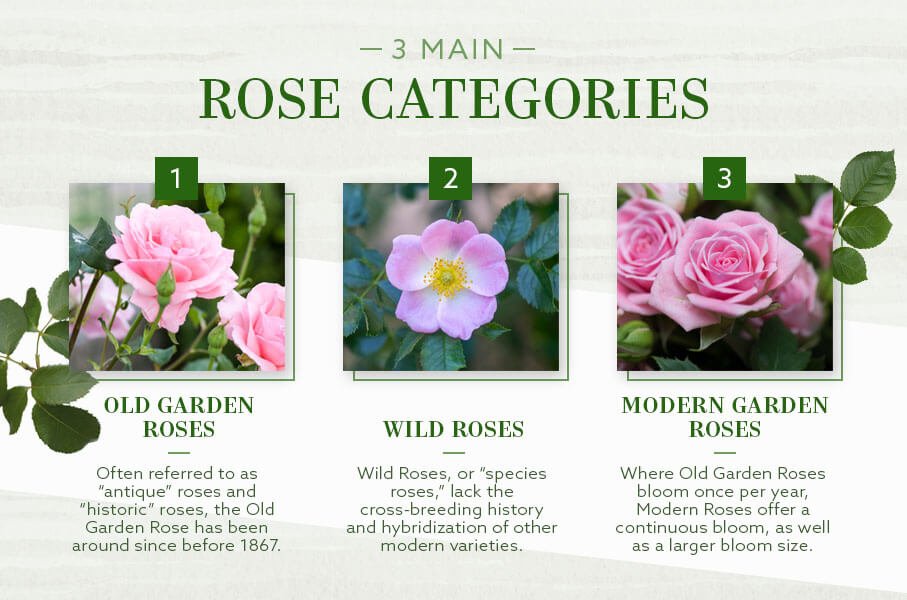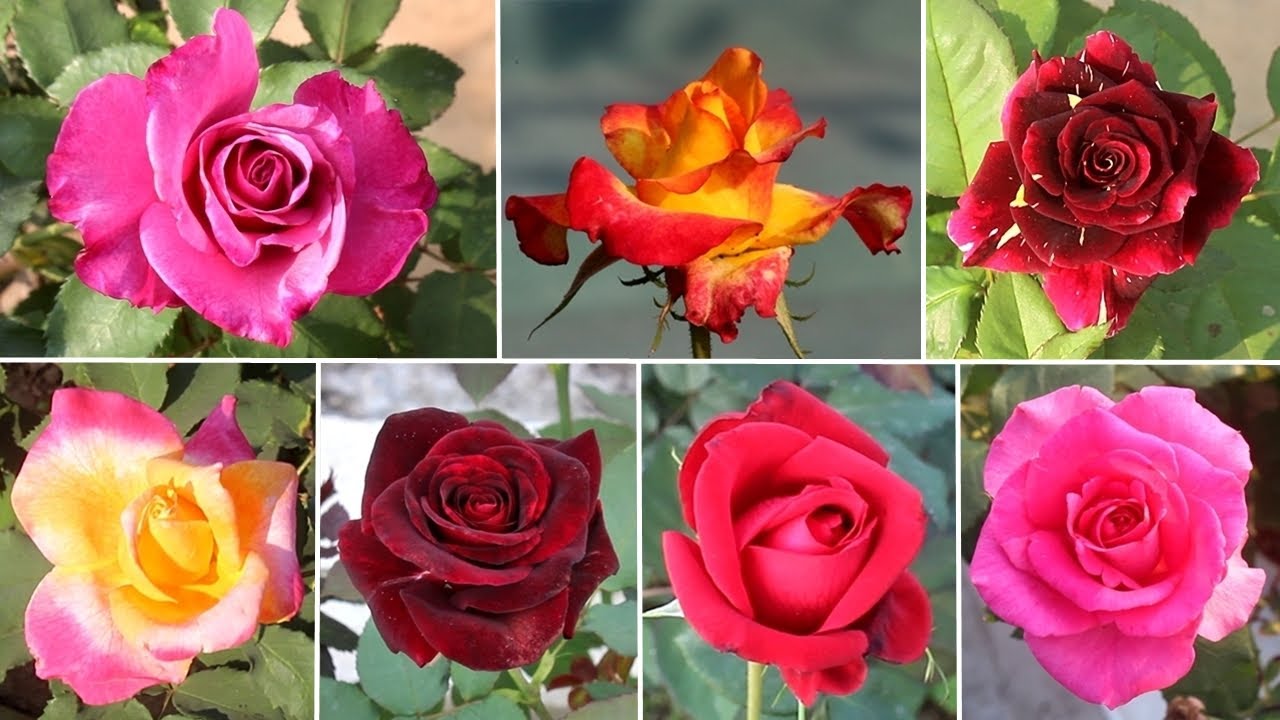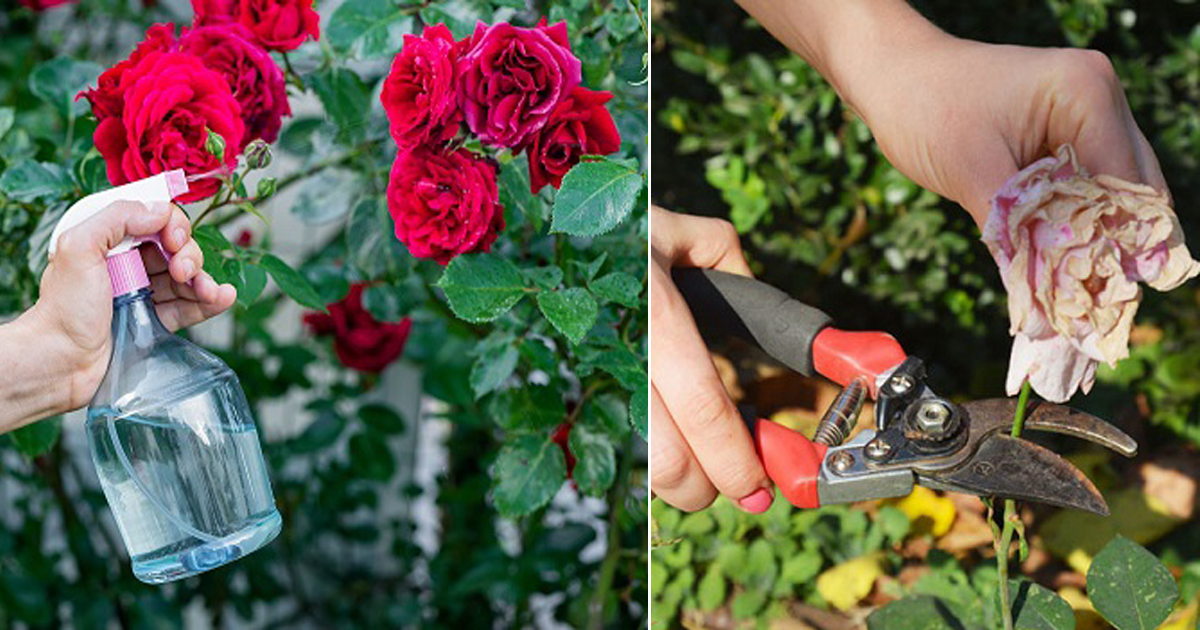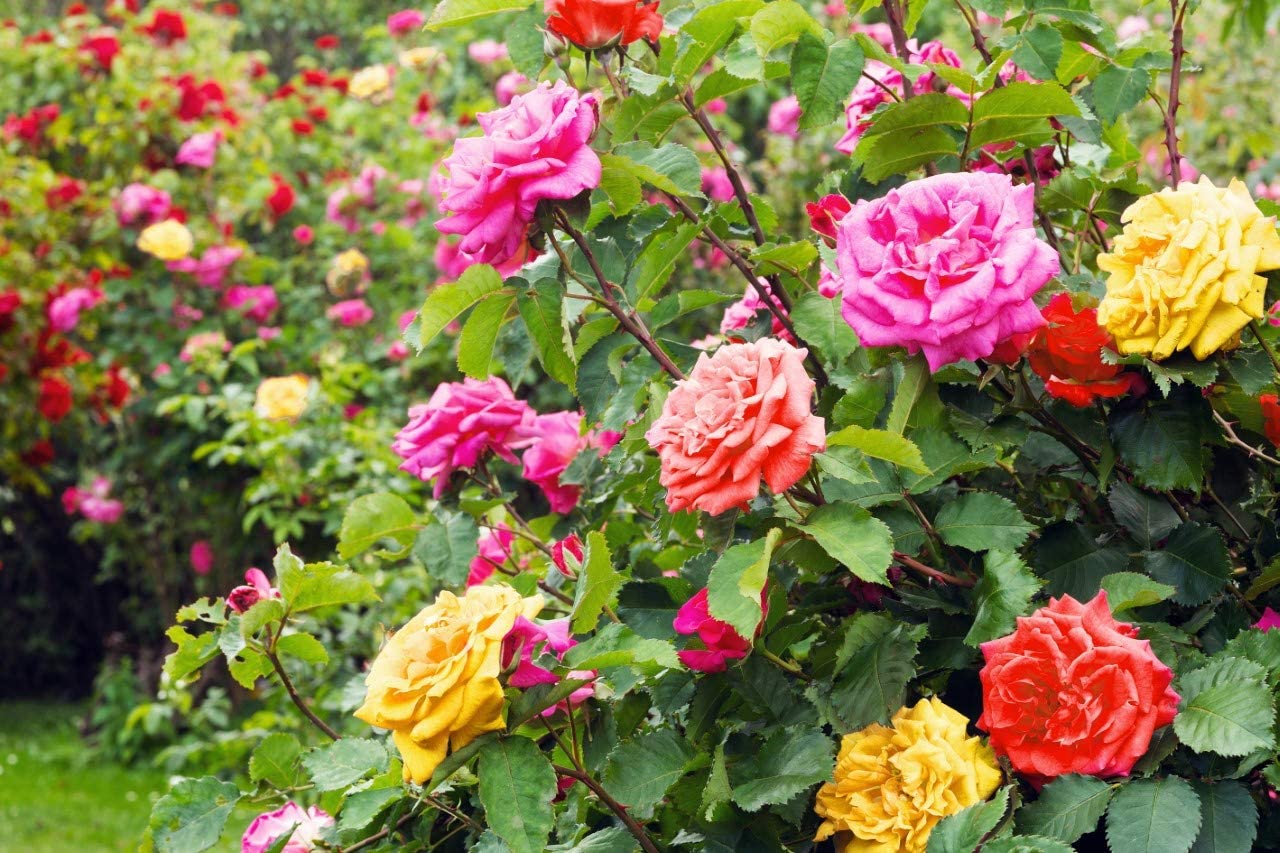Types Of Roses | Most Beautiful | Complete Guide 2024
What are the types of roses? These beautiful blooms come in many shapes and sizes, each offering something special. Discover their uses in gardens and find the perfect fit for yours.
Dec 21, 202441.4K Shares567.2K Views
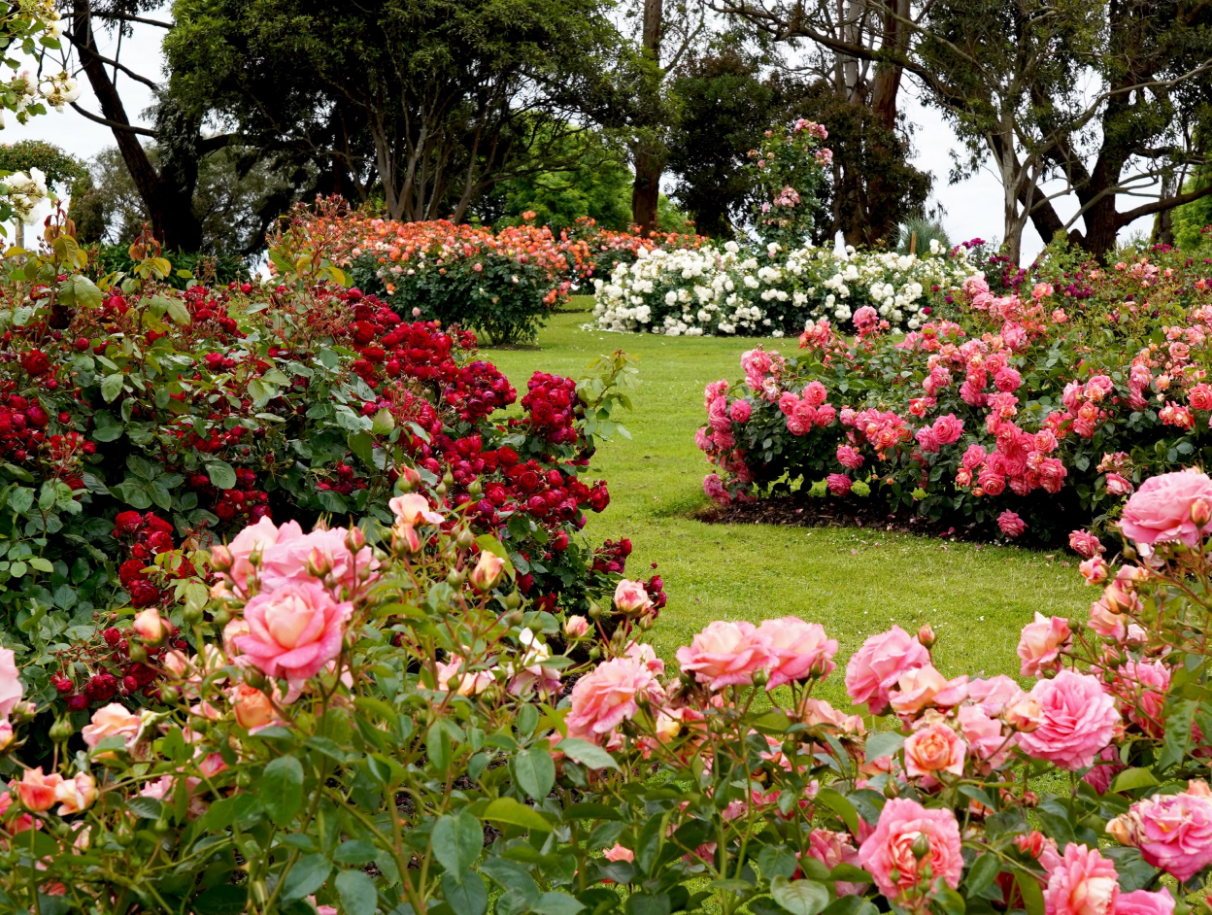
Roses have long been symbols of beauty, love, and elegance, adding a timeless charm to gardens worldwide. With an incredible variety of colors, shapes, and sizes, they offer endless possibilities for creating vibrant, fragrant landscapes.
But with so many types to choose from, finding the perfect rose for your garden can feel overwhelming.
Understanding the different rose varietiesand their unique characteristics is key to creating a flourishing rose garden.
From hardy shrub roses to elegant hybrid teas, this guide will help you make the best choice for your space, climate, and level of care, ensuring your roses thrive for years to come.
Three Main Categories Of Roses
Roses can be classified into three main categories, each with distinct characteristics. Understanding these categories will help you choose the right rose for your garden.
1. Old Garden Roses
Old Garden Roses, also known as heritage or antique roses, are varieties that existed before 1867. These roses are prized for their strong fragrance and large, multi-petaled blooms. While they usually bloom only once a season, their beauty and disease resistance make them highly sought after.
- Bloom Style: Large, full blooms with layers of petals.
- Fragrance: Known for their rich, heady scent.
- Maintenance: Disease-resistant and easy to care for.
Popular Varieties:
- Damask Rose: Valued for its use in perfumes.
- Gallica Rose: An ancient variety used for its medicinal properties.
2. Wild Roses (Species Roses)
Wild Roses, or species roses, are the ancestors of modern roses. These simple, hardy roses have single-petal flowers, usually pink, and thrive in natural environments. They are low-maintenance and perfect for more rustic or wild garden settings.
- Bloom Style: Simple, five-petal flowers.
- Color: Mostly pink, with some white or red varieties.
- Maintenance: Hardy, with minimal care required.
Popular Variety:
Rosa Rugosa: Known for its ruggedness and ability to thrive in harsh environments.
3. Modern Garden Roses
Modern Rosesare varieties bred after 1867, created for continuous blooming and larger flowers. These roses offer a wide range of colors and forms, making them the most popular choice for gardens today.
- Bloom Style: Larger blooms with a longer flowering season.
- Fragrance: Often lighter than Old Garden Roses.
- Maintenance: Requires regular care but rewards with frequent blooms.
Popular Varieties:
- Hybrid Tea Roses: Known for their long stems and large, elegant blooms.
- Floribunda Roses: Produce clusters of smaller blooms for continuous color.
Specific Rose Varieties
1. Hybrid Tea Roses
Hybrid Tea Rosesare one of the most popular rose types, known for their large, well-formed blooms on long stems. These roses are ideal for cut flowers and floral arrangements, and they bloom in cycles throughout the growing season.
- Appearance: Large blooms with 30-50 petals.
- Fragrance: Light to moderate.
- Care: Requires regular pruning and deadheading to maintain shape and bloom.
Popular Varieties:
- ‘Tahitian Sunset’: Apricot-pink blooms with an anisescent.
- ‘Elle’: Striking pink blooms with a citrus and spice fragrance.
2. Floribunda Roses
Floribunda Rosesproduce clusters of blooms and are valued for their ability to provide continuous color throughout the season. They are hardier and easier to care for than Hybrid Teas, making them a popular choice for mass plantings and borders.
- Appearance: Clusters of smaller blooms.
- Fragrance: Mild, with some varieties having a fruity scent.
- Care: Low maintenance, requires less pruning.
Popular Varieties:
- ‘Cherry Parfait’: White and red two-tone petals.
- ‘Easy Does It’: Ruffled orange, pink, and apricot petals.
3. Grandiflora Roses
Grandiflora Rosesare a cross between Hybrid Tea and Floribunda Roses. They combine the elegance of Hybrid Teas with the blooming clusters of Floribundas.
- Appearance: Large blooms in clusters.
- Fragrance: Light to moderate.
- Care: Requires regular pruning and deadheading.
Popular Varieties:
- ‘About Face’: Bicolor orange Grandiflora with disease resistance.
- ‘Wild Blue Yonder’: Purple blooms with a strong citrus fragrance.
4. Polyantha Roses
Polyantha Rosesare compact and known for their ability to produce abundant clusters of small blooms. They are perfect for borders or small garden spaces.
- Appearance: Small blooms in tight clusters.
- Fragrance: Light to moderate.
- Care: Low maintenance, with excellent disease resistance.
Popular Varieties:
- ‘The Fairy’: A pink Polyantha known for its hardiness.
- ‘Morden Fireglow’: A cold-hardy variety with orange-red blooms.
5. Miniature And Miniflora Roses
Miniature Rosesare smaller versions of traditional roses, perfect for container gardening or small spaces. Miniflora Rosesare slightly larger but still compact.
- Appearance: Compact plants with small, well-formed blooms.
- Fragrance: Mild to moderate.
- Care: Needs more frequent watering in containers.
Popular Varieties:
- ‘Rainbow Knock Out’: Coral blooms with yellow centers.
- ‘Julia Child’: Rich golden blooms with a licorice fragrance.
How To Choose The Right Rose For Your Garden
Choosing the right rose involves considering your garden’s climate, space, and the level of care you're prepared to offer. Here are the main factors to consider:
Climate
- Cold Climates: Choose hardy varieties like Rugosaor Shrub Roses.
- Warm Climates: Opt for Hybrid Teas, Floribundas, or Grandifloras, which thrive in full sun.
Space
- Small Gardens or Containers: Choose compact varieties like Miniature Roses or Polyanthas.
- Larger Gardens: Shrub Rosesand Climbing Rosesare ideal for filling large spaces.
Purpose
- Cut Flowers: Hybrid Teasand Grandiflora Rosesare perfect for floral arrangements.
- Low-Maintenance: Knock Out Rosesare easy-care varieties that bloom continuously with minimal effort.
Tools And Supplies You’ll Need For Rose Care
Having the right tools and supplies can make caring for your rosesmuch easier. Whether you're a beginner or an experienced gardener, here’s what you’ll need to keep your roses healthy and thriving.
1. Pruning Shears
- Why You Need Them: Pruning shears are essential for removing dead or damaged branches, shaping the plant, and encouraging more blooms. Bypass pruners are ideal for making clean cuts without damaging the stems.
- Recommended Use: Prune roses in early spring before new growth begins. Remove any dead, diseased, or crossing branches to improve airflow and overall plant health.
2. Gardening Gloves
- Why You Need Them: Many roses have sharp thorns that can easily scratch your hands. Investing in thorn-proof gloves protects your hands while pruning or handling roses.
- Recommended Use: Wear gloves anytime you’re pruning or deadheading roses to avoid injury.
3. Mulch
- Why You Need It: Mulch helps retain moisture in the soil, suppresses weeds, and regulates soil temperature, making it an essential part of rose care.
- Recommended Use: Apply 2-3 inches of mulch around the base of the rose bush, being careful not to pile it up against the stem.
4. Fertilizer
- Why You Need It: Roses are heavy feeders and require regular fertilization to produce vibrant blooms. Use a balanced rose fertilizeror organic compostto feed your plants.
- Recommended Use: Fertilize roses in early spring, and continue feeding every 4-6 weeks during the growing season for optimal growth and blooming.
5. Watering Can Or Irrigation System
- Why You Need It: Roses need consistent watering, especially during dry spells. A watering can with a long spout or a drip irrigation system helps direct water to the base of the plant, preventing the foliage from getting wet and reducing the risk of fungal diseases.
- Recommended Use: Water deeply, but avoid overwatering. Roses generally need about 1-2 inches of water per week.
Practical Care Tips For Different Rose Types
Caring for roses involves understanding their specific needs. While some varieties require more attention, others are quite low-maintenance. Here are practical tips for keeping different types of roseshealthy.
Hybrid Tea Roses
- Pruning: Prune Hybrid Teas in early spring, removing dead wood and shaping the plant. Regular deadheading throughout the season will encourage continuous blooms.
- Watering: Water at the base to avoid wetting the leaves, which can lead to fungal diseases like black spot.
- Fertilization: Use a balanced fertilizer every 4-6 weeks to support vigorous growth and large blooms.
Floribunda Roses
- Pruning: Floribundas require less pruning than Hybrid Teas but still benefit from occasional deadheading to promote fresh blooms.
- Watering: Ensure consistent watering during hot weather, especially if they are planted in full sun.
- Fertilization: Apply a slow-release fertilizer at the start of the season for prolonged feeding.
Shrub Roses
- Pruning: Shrub Roses need minimal pruning. Simply remove any dead or weak branches to encourage a fuller shape.
- Watering: Water deeply and mulch to help retain moisture, especially during dry periods.
- Fertilization: These hardy roses generally need less frequent fertilization but will benefit from a spring feeding.
Climbing And Rambling Roses
- Pruning: Train canes to grow horizontally on trellises or fences to maximize bloom production. Prune old wood to encourage new growth.
- Watering: Ensure that climbing roses get enough water, especially during hot, dry weather.
- Fertilization: Use a high-phosphorus fertilizer to encourage strong root development and blooming.
Common Rose Pests And Diseases
Despite their beauty, roses are susceptible to several common pests and diseases. Early detection and proper treatment can prevent significant damage to your plants. Here are some of the most common issues you may encounter:
Pests
Aphids
- What They Do: Aphids are small, sap-sucking insects that can distort rose buds and stunt plant growth.
- How to Manage Them: Use insecticidal soap or neem oil to control aphid populations. Ladybugs, a natural predator, can also help reduce their numbers.
Japanese Beetles
- What They Do: These beetles feed on rose leaves, leaving behind skeletonized foliage.
- How to Manage Them: Hand-pick beetles off the plants or use traps. Neem oil is also effective in deterring them.
Spider Mites
- What They Do: Spider mites thrive in hot, dry conditions and cause yellowing leaves and fine webbing.
- How to Manage Them: Increase humidity by regularly spraying the leaves with water. If infestations persist, use a miticide.
Diseases
Black Spot
- What It Is: A fungal disease that causes black spots on the leaves, leading to defoliation.
- How to Manage It: Water at the base of the plant and ensure good air circulation. Remove and destroy affected leaves, and apply a fungicide as a preventative measure.
Powdery Mildew
- What It Is: A white, powdery fungus that appears on the leaves, especially in humid conditions.
- How to Manage It: Improve air circulation around your plants by pruning and avoid overhead watering. Use a sulfur-based fungicide if necessary.
Companion Planting With Roses
Companion planting can benefit your roses by deterring pests, improving soil conditions, and enhancing the overall health of your garden. Here are some ideal companion plants for roses:
Lavender
Why It Works: Lavenderrepels aphids, a common rose pest, while complementing the color scheme of many roses with its purple flowers and silvery foliage.
Marigolds
Why It Works: Marigolds repel pests like aphids and nematodes and add bright, cheerful color to your rose garden.
Alliums (Garlic, Chives)
Why It Works: Alliums help repel common rose pests like aphids and spider mites. Planting garlic or chives near roses provides natural pest control without the need for chemicals.
Sage
Why It Works: Sage repels pests like spider mites and aphids, and its aromatic leaves can also be used in cooking, making it both a practical and decorative companion plant.
Famous Roses Around The World
Some rose varietieshave become famous for their beauty, fragrance, or historical significance. Here are a few iconic roses that have gained worldwide recognition:
The Peace Rose
History: Developed during World War II, the Peace Rose is a symbol of hope and peace. Its creamy yellow petals edged with pink have made it one of the most beloved roses worldwide.
The Juliet Rose
History: Created by famed breeder David Austin, the Juliet Rose is one of the most expensive roses ever developed. Its soft apricot blooms and classic shape have made it a favorite for weddings and special occasions.
The Damask Rose
History: Known for its strong fragrance, the Damask Rose has been used for centuries in perfume making. It is prized for its aromatic oils and remains a key ingredient in many luxury perfumes.
FAQs About Types Of Roses
Which Roses Are The Easiest To Grow?
Easy-care roseslike the Knock Outand Carefree Beautyvarieties are perfect for beginners. They are disease-resistant and bloom continuously with minimal maintenance.
How Often Should I Prune My Roses?
Roses should be pruned in early spring before new growth begins. Regular deadheading during the growing season encourages more blooms and helps maintain the plant's shape.
Can I Plant Roses In Containers?
Yes! Miniature Rosesand Miniflora Rosesare ideal for containers due to their compact size. Ensure the container has good drainage and use a high-quality potting mix.
What Are The Best Roses For Shaded Gardens?
Roses like ‘Iceberg’and ‘Fairy Rose’can tolerate partial shade and still produce abundant blooms. These varieties are excellent for gardens with lower light conditions.
Conclusion
Roses have the remarkable ability to transform any garden into a stunning display of color and fragrance. Choosing the right rose variety and learning how to care for them will reward you with blooms that last throughout the season, enhancing your outdoor space with beauty and elegance.
By following the practical tips on selecting and maintaining roses, you can create a garden that reflects your personal style and thrives in harmony with its environment.
Roses may require some attention, but the joy they bring makes every effort worthwhile.
Linkhouse
Jump to
Three Main Categories Of Roses
Specific Rose Varieties
How To Choose The Right Rose For Your Garden
Tools And Supplies You’ll Need For Rose Care
Practical Care Tips For Different Rose Types
Common Rose Pests And Diseases
Companion Planting With Roses
Famous Roses Around The World
FAQs About Types Of Roses
Conclusion
Latest Articles
Popular Articles
